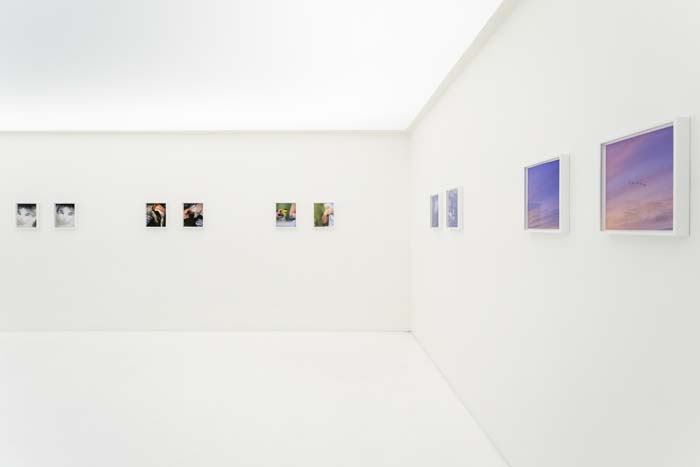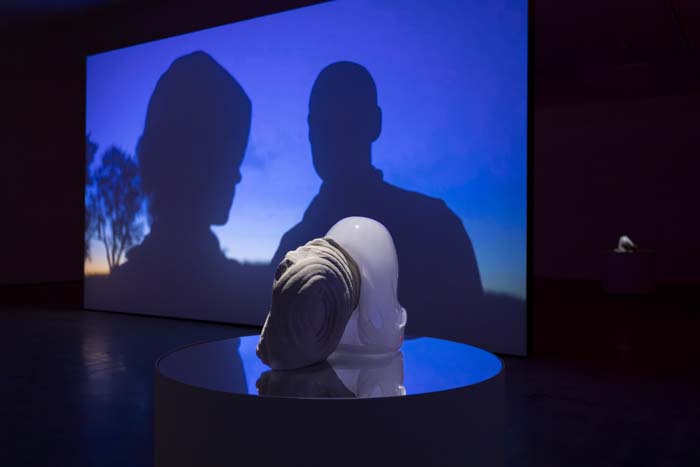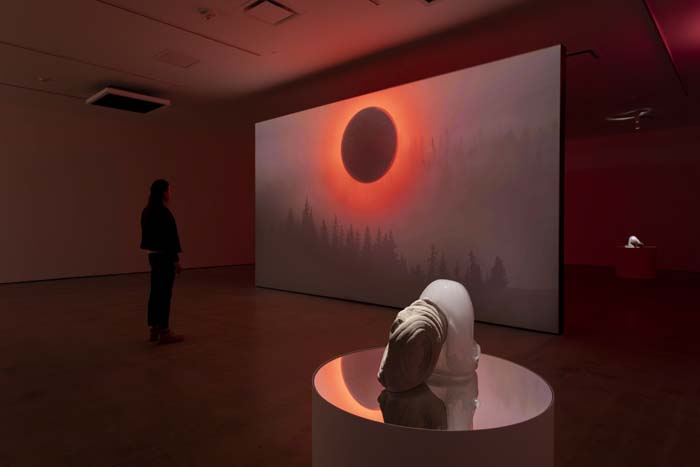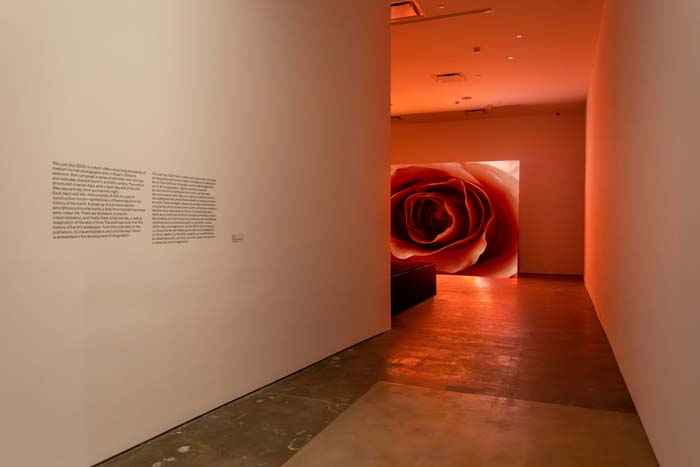In Goodnight Moon, Rachel Rose’s ambitious and deeply researched work opens multiple tiny entry points into vast stories of past and future days and ages.
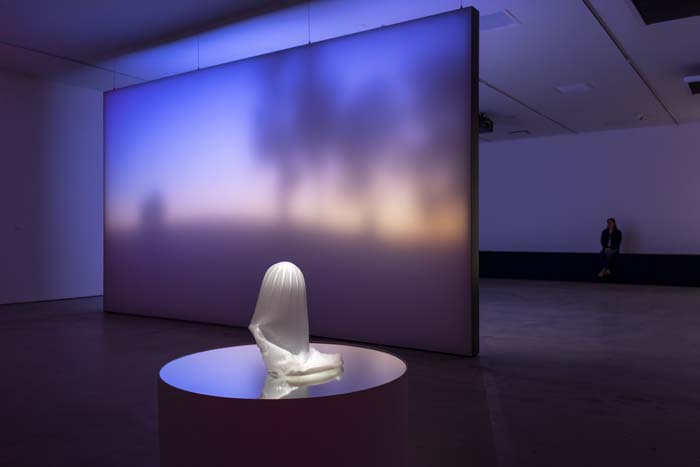
Rachel Rose: Goodnight Moon
June 2–September 11, 2023
SITE Santa Fe
Rachel Rose’s new film, The Last Day (2023), which premiered in June among recent works by the artist in her SITE Santa Fe exhibition, Goodnight Moon, offers a way into the ages of the earth by way of a door to a child’s bedroom left ajar. Toys and quotidian objects appear in compressed time in scenes that employ image displacement as a means of suggesting one earth epoch morphing into another.
Godzilla appears, as do Bambi, toy dinosaurs, a firetruck, and a Volkswagen frozen in industrial plastic. A fuzzy bunny offers the trembling reassurance of fake fur tinged with menace. Stop-motion animations of toy parakeets twitter in concert with Disney tweets and trills.
The soundtrack of The Last Day, an audio pastiche of bittersweet reckonings from childhood, suggests chuckle-worthy illusions of nostalgia in the midst of grander sweeps of time, music that sounds like a wish born in sunlight falling through leaves and branches—but careful, the world is on fire. A response may include semi-volcanic merriment erupting from one’s chest. “Goodnight noises everywhere,” indeed.1
Moonshines, the second of the four rooms of the exhibition, introduces viewers to the first of four sculptures titled Loops, but is otherwise dedicated to seven 19th-century paintings on loan from the Yale Center for British Art—five by Samuel Palmer and one each by William Blake and John Linnell. The scenes of agrarian and family life that link the seven paintings are a prelude to Enclosure (2019), the film that is featured in the third room.

The Loops (2021-23), made of hot glass poured over rock and an egg-shaped burl, mimic uplift—the process by which rocks make their way to the surface of the earth—and are placed on round, mirror-topped pedestals. Lit from above such that shadows are cast on the ceiling in a kind of eclipse, the mirrors also provide interactions with the seams and corners of the white cube in which the work is presented, as if to contrast the temporality of human structures to geological implications.
Enclosure is set in 17th-century England. The title refers to the privatization of common lands and a malaise of exploitation which is framed as prefiguring industrialization. Within the narrative, which reads like a sudden, wild stream of witness to treachery and portent, some characters are presented as cursed.
The film is punctuated by a series of disturbing images alternating with sometimes romanticized scenes of Edenic-lusciousness: a woman tied and struggling in a barn; a figure playing a lute ‘neath a tree; dead rabbits strung up and clutching the blue “cash” from land transfer; the same blue polluting a river; clothes being washed in a stream.
An ominous black orb, which recurs in the sky throughout the film, reads as a prophetic omen of the Anthropocene (and seems to reference Ben Wheatley’s 2013 folk horror film A Field in England, set during the English Civil War), adding to the portentous bearing of the image—the enclosure of William Blake’s “infinite brain into a narrow circle.”2 Its presentiment partners with the character Jacko, a swindler who uses alchemical sleight of hand to sign away the resources of the peasants and whose name seems mined from the same strata of folklore as in a previous Rose film Wil-O-Wisp (2018).
The screen on which Enclosure is projected allows a blurred version of the film to be seen from the back side in a ghostly light, allying itself with the sometimes murmured dialogue, finding further alignment with those who have been silenced, exploited, and obscured throughout human history.

Viewing the film from the backside, I’m thinking of versions of the “Moonlight Sonata” played backward, and as I round the right edge of the screen to complete a loop around it, my steps are perfectly aligned with Recent, a fellow grifter of Jacko, as she moves from left to right across the front side of the screen. We walk in parallel, she on repeat in the film, as I break away toward the fourth gallery. This coincidental paired movement prefigures the pairs of photos in the fourth gallery (Groundhog Day, 2023) all taken on February 2, 2023, which frame moments separated by milliseconds in reference to the 1993 film Groundhog Day, in which the main character is caught in self-induced repetition of futility until he finally awakens to the world around him.
The shifts in the photo-pairs range from subtle to dramatic: the inscrutable but affectionate look on a cat’s face that only changes from one photo to the next because the cat moves slightly; six birds gaining distance as pink fades from the sky; two images of an hour glass, one in shadow, the other bathed in light, though any difference in the falling sand is imperceptible.
The floating scrim ceiling and white floor and walls of this room conspire to create a featureless and timeless space that is accidentally violated by a tiny feather that has found its way onto the topside of the scrim. It may be observed from below in profile and may be seen to mimic the final day in Groundhog Day—the day in which the protagonist finally embraces the unforeseen circumstances of daily life.
Rose’s ambitious and deeply researched work opens multiple tiny entry points into vast stories of past and future days and ages. On the date that I visited Goodnight Moon, the first super moon of 2023 loomed and marked with significance my experience of her show, which offers the transport that is the best promise of art.
